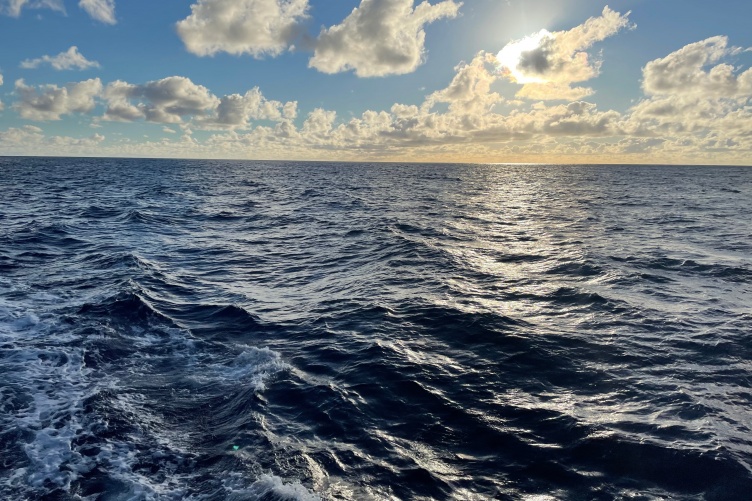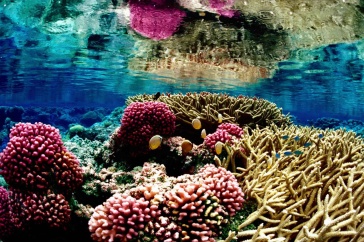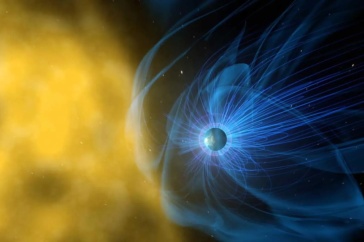
There are deserts within the ocean — places that, although not entirely barren, don’t hold a lot of nutrients for marine life to fully thrive there. A new Nature Geoscience study co-authored by a UNH researcher shines a light on the chemistry of these vast ecosystems to show how phytoplankton — the base of the oceanic food chain — are able to survive in such tough conditions.
The study shows that the key lies in linkages between two chemical elements: phosphorus and iron, both of which are crucial components for marine life. Phosphorus in particular is very scarce in ocean deserts, so algae use iron to make specialized enzymes that allow them to break down and take in a less-preferred, but more readily available, type of phosphorus called dissolved organic phosphorus. This research is the first of its kind to note the co-importance of iron and dissolved organic phosphorus in supporting autotrophs — organisms like phytoplankton that produce their own food — within ocean deserts.

Robert Letscher, an assistant professor of Earth Sciences in the UNH Ocean Process Analysis Laboratory and the UNH College of Engineering and Physical Sciences, has spent a good portion of his career studying how ocean deserts get what little nutrients they have and how they cycle through the system.
“In this study, we’ve found out something fundamental about the phosphorus and iron cycles of the ocean, about their interdependence, and how important iron really is for autotrophs to be able to access and use the dissolved organic phosphorus to survive in these comparatively harsh conditions,” Letscher says.
Ocean deserts typically exist in subtropical latitudes — centered around 30 degrees on either side of the equator — far away from the more biologically productive coastal regions. Letscher estimates that ocean desert ecosystems stretch across approximately 40 percent of the planet’s surface, making them the largest biome on Earth.
Phosphorus originates from the weathering of bedrock that washes into rivers and eventually the sea; iron flows from deep-sea hydrothermal vents and blows in as dust from places like the Sahara Desert. But unlike land surfaces where nutrients come from the soil and circulate between plants, fungi, and animals, nutrients in the open sea tend to sink to the bottom and get trapped there because the ocean doesn’t mix vertically very well, thus leading to the term “ocean deserts,” Letscher explains.
For this study, the research team looked at large datasets of dissolved organic phosphorus and iron levels in ocean deserts around the world; these data were collected from water samples taken on prior cruises and estimated via satellites. Their results indicate that the regions where this linkage between dissolved organic phosphorus and iron is most prominent include the North Atlantic near Bermuda, the Western South Pacific near Australia and New Zealand, and the Western North Pacific just east of the Philippines and to the southeast of Japan, according to Letscher.
He notes that finding patterns in data that reveal ocean processes is part of the novelty of scientific discovery. “We didn’t have an initial hypothesis to prove or disprove, we just had this huge dataset that we wanted to look through to search for any correlations,” Letscher said. “We were fishing around and then we stumbled upon this relationship we weren’t necessary expecting, and it ended up being really fascinating.”
Funding for this research was provided by the National Science Foundation.
The UNH Institute for the Study of Earth, Oceans, and Space (EOS) is UNH's largest research enterprise, comprising six centers with a focus on interdisciplinary, high-impact research on Earth and climate systems, space science, the marine environment, seafloor mapping and environmental acoustics. With approximately 100 principal investigators managing more than 400 individual grant awards, and with annual expenditures exceeding $45 million, EOS fosters an intellectual and scientific environment that advances visionary scholarship and leadership in world-class and graduate education.
-
Written By:
Rebecca Irelan | Institute for the Study of Earth, Oceans, and Space | rebecca.irelan@unh.edu | 603-862-0990

















































